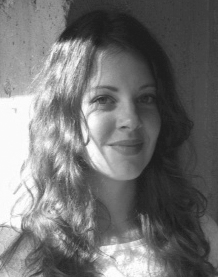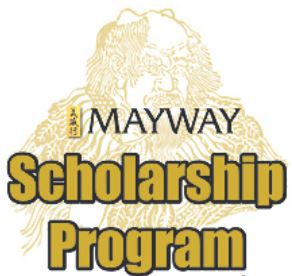Chinese Herbal Medicine: More Than the Sum of its Parts
 Anna Ritner is a student at American College of Traditional Chinese Medicine. This essay was submitted to the Mayway Scholarship Program and won the Plum Flower Scholarship.
Anna Ritner is a student at American College of Traditional Chinese Medicine. This essay was submitted to the Mayway Scholarship Program and won the Plum Flower Scholarship.
The fools of the world study formulas for three years and yet it is said [of them] that there is not a single disease under heaven that they are able to treat. After treating disease for three years, they finally become aware that no formula under heaven exists that they are able to use. For this reason, students must absolutely acquaint themselves to the greatest extent with the origins of medicine, studying tirelessly with absolute diligence. They may not recklessly repeat rumors and then claim that this is all there is to the Way of Medicine! Deep indeed is their self-delusion.
-Sun Si Miao, Essential Prescriptions for Every Emergency worth a Thousand in Gold (Bei Ji Qian Jin Yao Fang)
Western medicine and traditional medicine are as different as they are similar. Down to their very ideological roots – their neatly separated lexicons, divergent pathways of logic, and even their fundamental views of what “good health” equates to – science and the ancient healing arts always seem to be having the same conversation, albeit in two different languages. This is the yin and yang of old versus new, wholism versus specificity, Western versus Eastern thought.

To begin with, inherent logistic hurdles exist in standardizing the herbal medicine process. For example, classical herbal texts don’t elucidate the exact compositions of herbal remedies. Herbs, being products of the earth, are influenced by numerous unpredictable factors, including botanical species, geographic area, climate, and, of course, the portion of the plant that is used medicinally. These factors alter the chemical composition of any given species, resulting in major differences in pharmacodynamics and pharmacokinetics (Firenzuoli and Gori, 2007, p. 40).
This research roadblock actually agrees with the Chinese medicine perspective, that the Qi of heaven and earth have no small impact on the medicinal value of substances. It is a delicate and complex relationship, and, similarly, so is that of plant ingredients’ interactions with the human body.
The mechanism through which Western medicine has developed and proliferated is magnification. A Doctor hears a patient’s chief complaint and begins moving inward, examining the tissues, the organs and bones, and at last, at a microscopic level, the very cells that form the basis of biological life. Chinese medicine, which has developed empirically through the millennia (and certainly had no access to such “inside” technology), does the opposite. A good practitioner hears her patient’s chief complaint and begins moving outward, observing the Shen of the patient, the seasonal Qi; considering the 6 evils in relation to the place, environment, and situation. Lastly she pans out and observes her patient as an inseparable part of the universe. How can “zooming in” on plant substances fit within the framework of a medicine that by nature must “zoom out” to create a context for understanding?
The authors of the standard TCM herbal medicine textbook, Chinese Herbal Medicine: Materia Medica (1993), acknowledge that “Herbs of all types, including those from China, are composed of a multitude of ingredients whose interactions with the body are exceedingly complex. Ordinarily research is conducted on the composition of herbs in order to isolate their active ingredients. This presupposes that the herbs in fact operate according to the same principles as biomedical drugs. For most of the researchers in this field that is an easy assumption to make because many of the modern biomedical pharmaceuticals are derivatives of natural substances” (Bensky & Gamble, p. 12).
While it may be an easy assumption to make, however, it is not necessarily the correct one. As herbalist Michael Tierra (1992) notes, “In order to understand the over-all effect of a particular substance on an individual, one must take into account its total ‘personality’ or energetic nature as well as its specific therapeutic action” (p. 26).
Human beings self-actualize when they see themselves as a dynamic part of a group, such as a family. Just like humans, the personalities of herbs don’t shine in isolation. By creating contrast and opposition with different tastes, temperatures and directions, the skilled herbalist creates spaces in between individual herb actions, and that intangible space is precisely where the therapeutic system operates.
In his essay ‘The Art of Applying Chinese Herbs” (2005), teacher-practitioner Haosheng Zhang explains the character for medicine, yao, 药 , which is translated as a “grass used to treat a disease.” The character yao, 药 , is, in fact, a combination of the characters cao, 草 (grass) and yue, 乐 , (music). Therefore, yao-medicine can be viewed as “substances that bring harmony and restore the balance of yin and yang.” The “harmony” of herbal medicine involves at least four components: the combining of herbs, the quantity of specific herbs, the methods of preparation or processing, and the methods of cooking and taking the herbs (p. 34).
The combination of herbs in and of itself is a symphony. The Chinese Herbal Medicine: Materia Medica (1993) lists the techniques for combining herbs through eight methods: mutual accentuation, mutual enhancement, mutual counteraction, mutual suppression, mutual antagonism (generally not desirable), mutual incompatibility (contraindications), and finally, single effect (p. 8-9). Because most herbs have several actions, the way they are combined highlights certain therapeutic effects and mutes others. Therefore the herbs actually depend on one another for individual manifestations. For instance, when Chai Hu is used in a case of Liver Qi Stagnation, it is paired with Bai Shao; but when combined with Sheng Ma it actually raises the Yang Qi (Zhang, p. 34).
The quantity of herbs administered depends on the patient, and practitioners must consider constitution, gender and the condition being treated when devising a formula. According to Zhang, “Ancient Chinese medical practitioners regarded their formulas as great secrets; the essence of this secret being the quantity of each herb” (p. 36).
The classical Chinese herbal medicine texts like the Shang Han Lun (Treatise on Cold Damage Disorders) provide the underpinnings for the importance of quantity. For example, the formulas Xiao Cheng Qi Tang and Hou Po San Wu Tang have exactly the same ingredients (Da Huang, Hou Po, and Zhi Shi), and both can be used for excess-pattern constipation. However, the chief herbs – Da Huang and Hou Po, respectively – are administered in larger doses and therefore have different therapeutic mechanisms. Xiao Cheng Qi Tang purges clumped heat in Yangming disorders (Scheid, Bensky, Ellis & Barolet, 2009, p. 66), whereas Hou Po San Wu Tang treats abdominal distension and constipation due to Qi stagnation (Fan, 2001, n.p.).
In the eyes of scientific medicine, quantity of medicines administered is a relatively measurable aspect. And surprisingly, the research seems to bring Chinese medicine back to its roots. According to Zhang (2005), modern investigations show that straying from the Shang Han Lun’s recommended dosages of any of the herbs in Wu Ling San lessened the formula’s clinical effectiveness (p. 36).
Directions for the cooking and processing of herbs is also clearly specified in classical texts. The Wen Bing Tiao Bian (Treatise on the Differentiation and Treatment of Seasonal Warm Diseases) outlined the imperativeness of a short cooking time for the formula Yin Qiao San. By cooking the herbs just until fragrant, the pungent nature of the herbs is summoned, and the key to releasing the exterior is in the formula’s pungency. If it is cooked for too long its action is directed to the middle burner (Zhang, p. 38).
Although the gold standard of scientific research is the randomized double blind, placebo-controlled trial, this model clearly isn’t the proper ruler with which to measure Eastern medicine. The World Health Organization, states that “Traditional use of herbal medicine is usually an integral part of culture, which was developed within an ethnic group before the development and spread of modern science. Respect for the principle of the traditional system of medicine under study must be an important priority. Traditional knowledge and experience of the use of herbal medicines should be considered when the research is proposed, prepared and conducted.” (“General Guidelines for Methodologies on Research and Evaluation of Traditional Medicine,” 2008).
One of the risks of Western medicine’s scientific inquiry is the issue of underestimating Chinese herbal medicine’s effectiveness as a result of failing to use herbal formulas as intended by the ancients who created them. Even more troubling is the possibility of the same overwriting of tradition causing these potent and sometimes toxic substances to be used out of context, in isolation, and then deemed as unsafe. A famous example of this was the outlawing of the herb Ma Huang after its active ingredient, Ephedra, was exploited in Western weight loss products.
The prospect of opening the “black box” of Chinese medicine is fascinating. Whereas science’s ability to measure the effectiveness of acupuncture is generally deemed extremely complicated, herbs are physical substances that Westerners have an intellectual vocabulary for. The prospect of combining modalities, such as Western medicine, Chinese medicine, and other indigenous healing systems in order to reap maximum healing power is a stanchion of hope in a world of increasingly mysterious chronic diseases and their associated collective fear . Not to mention, capitalizing on the benefits of herbal medicine is already providing, and will continue to provide a boon for industries such as pharmaceuticals and cosmetics.
While the effectiveness of Chinese herbs is casting an exciting spotlight on the medicine, its foundational belief system is also in a moment of peril. Most American-trained acupuncturists were surrounded by the Western scientific model until enrolling in TCM school, and one of the great challenges of becoming a competent herbalist is suspending those indoctrinated beliefs in order to make way for a more subtle, long-term and holistic version of health. Therefore, it is extremely tempting to practitioners to subscribe to a version of herbal medicine that fits within their native cultural system.
What Chinese herbalists must hold close to heart is the long history of the medicine – a proven effective system that far outdates the modern, analytical, data-centric way of relating to the world. It is only by returning to the origins of Chinese medicine – namely its classical scrolls and textbooks – that the spirit of the medicine can be renewed. The good news is that so much information is recorded for us, including details about quantities, combinations and preparation of herbal formulas, exactly as they were administered in ancient times. The difficult news is the difficulty of translating these texts from their ancient Chinese into meaningfully complete English, but it will be far more difficult to rewrite the entire history of Chinese medicine based on modern science, which is constantly subject to change!
While Western medicine research will continue to “zoom in” on the chemical constituents and laboratory effects of Chinese herbs, this data should be of no concern to the confident herbalist. Opening the black box, we will find that there is actually nothing inside. Loosening our grasp on the box, let us be more interested, as has always been the case, with the person and her universe, which cannot possibly fit inside of one.

